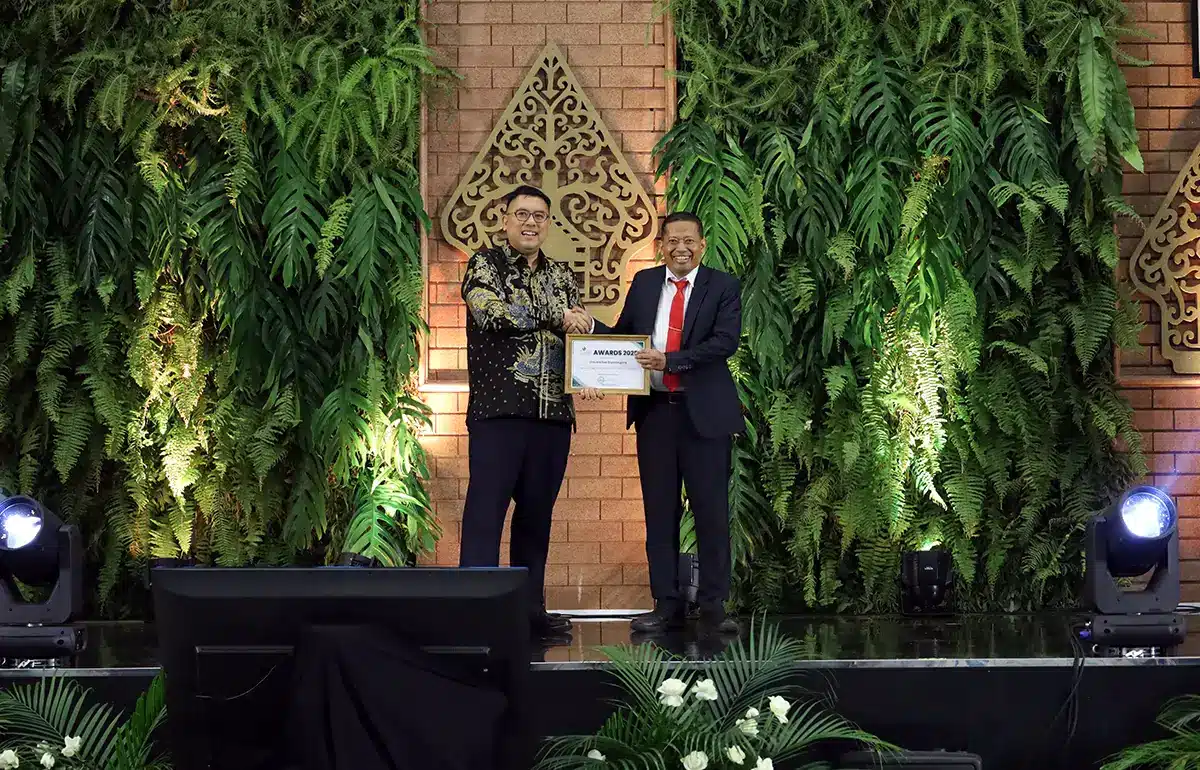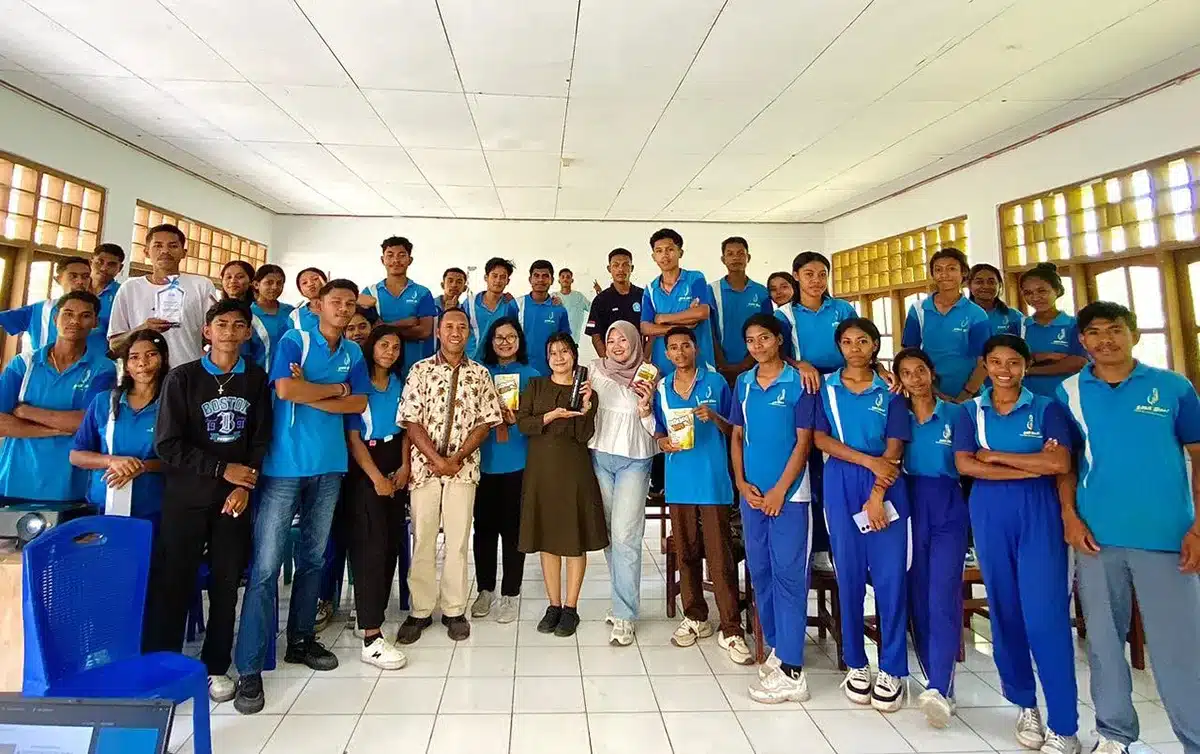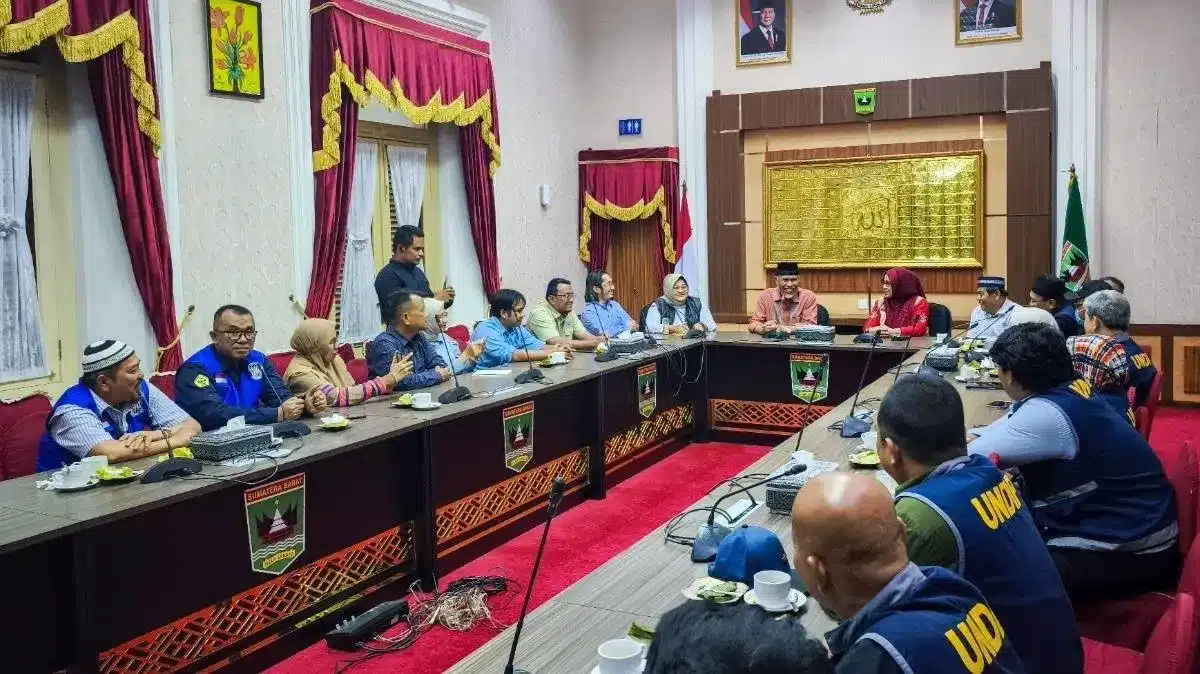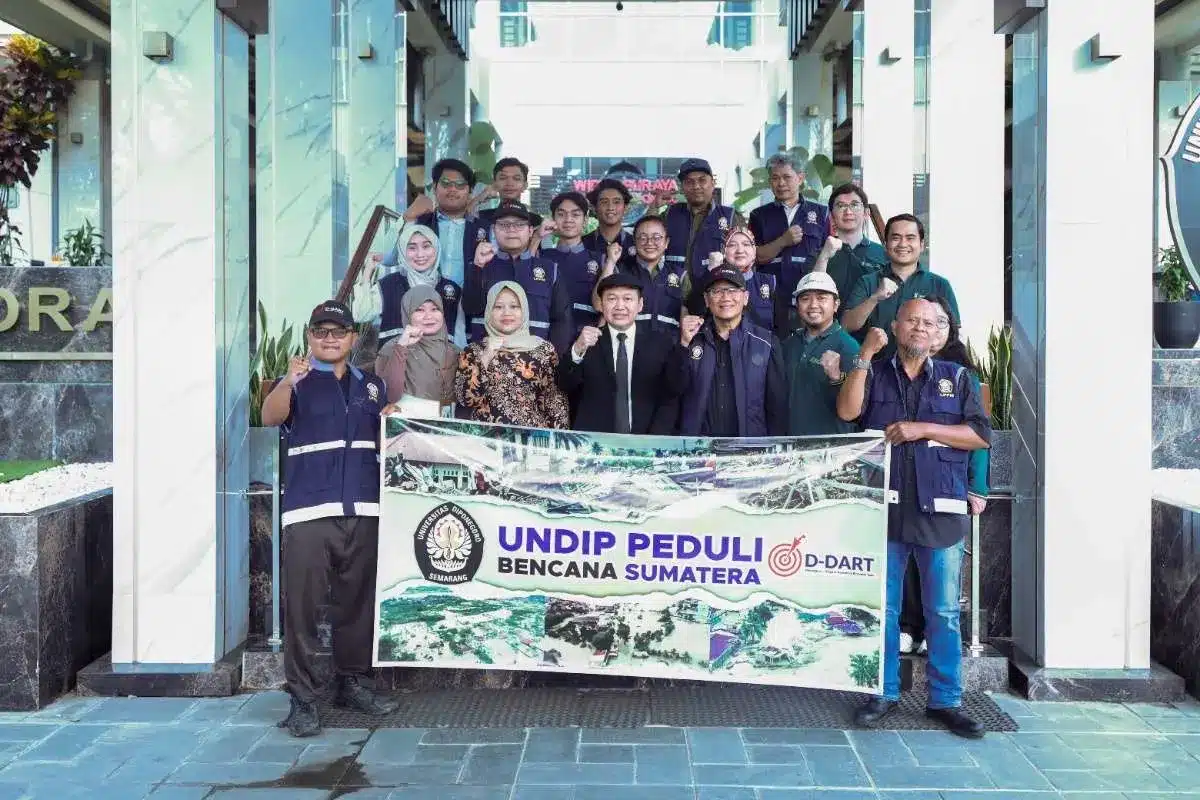The Diponegoro University Board of Professors held a scientific presentation for Undip professor candidates from the Faculty of Fisheries and Marine Sciences, Dr. Sc. Anindya Wirasatriya, S.T., M.Si., M.Sc. and Agus Trianto, S.T., M.Sc., Ph.D., Tuesday (30/5).
In his material presentation on “Upwelling Dynamics in Indonesian Waters and Opportunities of Its Utilization in Blue Economy Development,” Dr. Anindya said upwelling is the process of rising of the water mass from the deeper water column towards the surface, which is marked by the cold sea surface temperature (SST) and the high content of chlorophyll-a on the surface. Upwelling is generated by winds that cause Ekman to transport away from the coast, resulting in a vacuum of water masses on the beach and replaced by water masses from the bottom layers. Upwelling will lead to high fisheries productivity, so knowing the characteristics of upwelling is vital in managing fisheries in an area.
In Indonesian waters, east monsoon upwelling occurs along the west of Sumatra, south of Java, Bali, and Nusa Tenggara; south of Sulawesi; Maluku Sea; the northern part of the Maluku Sea; Banda Sea; and Halmahera Sea. Areas that experience upwelling in the west monsoon are the Malacca Strait, along the north of Bali-Nusa Tenggara, and the north of Papua. Specifically for the east monsoon upwelling, positive El Niño and Indian Ocean Dipole (IOD) events will strengthen upwelling intensity, while La Niña and negative IOD will weaken upwelling power.
“In the waters of Alor Kecil, precisely in the Mulut Kumbang Strait, Alor Island, there is an extreme upwelling phenomenon marked by a drastic decrease in SST to more than 10°C and accompanied by an increase in salinity of 4‰ – 6‰ for one hour. Due to this extreme upwelling, the minimum SST can reach 12°C, which causes this phenomenon to be the only one in the world because it is not found in any tropical area where SST can reach <15°C. This phenomenon only occurs for 1 to 4 days, with a frequency of 2 times a day from August to November during full moon tide,” he said.
“Identification of upwelling areas in Indonesian waters for both the west and east monsoons will open up opportunities for the development of a blue economy in the fisheries sector through exploration of new fishing grounds in these upwelling areas to optimize the utilization of fish resources and prevent overfishing due to concentrated fishing in an area. The huge tourism potential from the extreme upwelling phenomenon in Alor Kecil waters is also an opportunity for developing a blue economy in the tourism sector,” continued Dr. Anindya.
While in his material entitled “Bioactive Materials from Marine Organisms: Potential and Development,” Agus Trianto, S.T., M.Sc., Ph.D. said that Gorgonian Isis hippuris is a source of bioactive ingredients in the Gorgosterol (compounds 1-10) and Hippuristanol (compound 11). Sea pens are also a source of bioactive materials such as Polycitorol (compounds 12a, b, and 13). Sponges are the richest source of bioactive compounds from the class of fatty acids, aromatics, macrolides, alkalide, and polyketides (compounds 14-28) which have bioactivity as antibacterial, antioxidant, and anticancer.

The main problem in developing drugs from natural ingredients is the continuous supply of large quantities of materials, so the number of drugs from natural ingredients is minimal, even though the discovery of bioactive ingredients reaches thousands. Various natural elements are marketed as crude extracts to accelerate market access. Gamat products from sea cucumber, seahorse extract or preparations, and spirulina extract are natural products already on the market. Some internal medicinal products are based on pure compounds from the sea, for example, cancer drugs; cytarabine A and trabectedin, viral drugs; vidarabine C, and painkillers; ziconotide.
“Indonesian marine organisms are a potential source of bioactive compounds as anticancer, antibacterial, antifungal, and antioxidant drugs. Bioactive compounds from Indonesian waters belong to the class of steroids, unsaturated fatty acids, alkaloids, polybrominated diphenyl ether, macrolides, and terpenes. Generally, bioactive compounds are present in low concentrations in marine organisms, making it difficult for further drug development. Marine microorganisms are a potential source of medicinal ingredients for mass and sustainable production. The development of drugs from natural ingredients requires a long time and high costs as well as various studies, so it is necessary to cooperate with experts from various fields of science and various institutions,” he explained. (LW/Public Relations)










